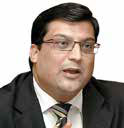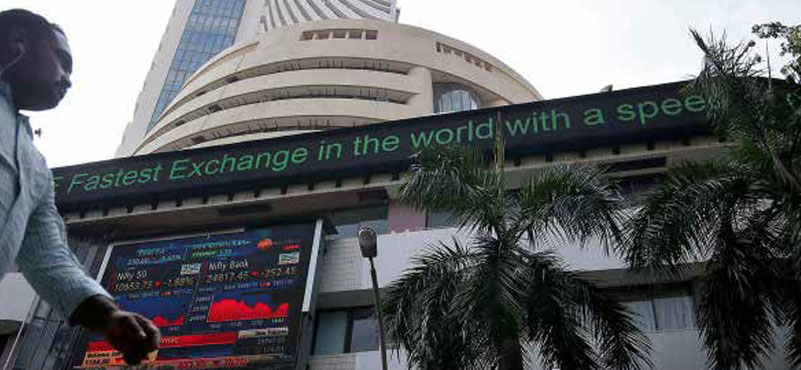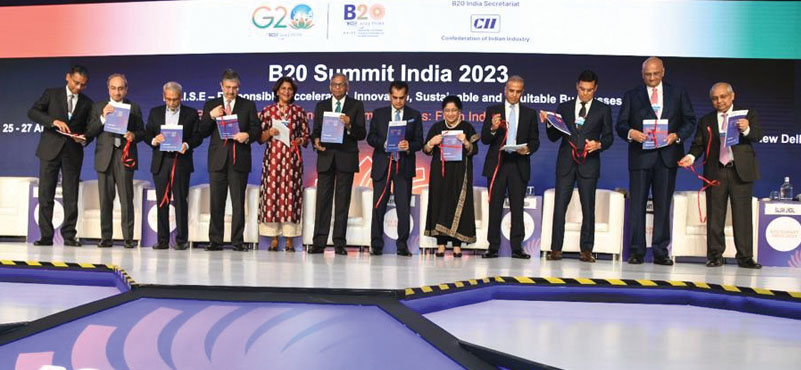It is as good a time as any for investing in the stock markets. A wiser route is through MF, says the author, as this means leaving your options with the people in the business.
You would have heard or read this phrase at some point in time. It means something which is the focus of everyone’s attention or admiration. Over the past few years, this is exactly what India has been on the economic and political landscape. Goes without saying that few decades ago, it would have been difficult to imagine India being the ‘cynosure of all eyes’ on the global stage. As is the case with most things, long established pecking orders change and India has been taking firm steps in the right direction.
Speaking of change in long-established pecking order, there is one which has been garnering ample attention lately. India recently surpassed China as the most populous country in the world. While this headline may have caught the attention of people around the world, India’s candidature as the next big economic superpower had already been established before this change in the demographic pecking order.
Emphasis on ease of doing business, focus on physical, virtual and social infrastructure, improvement in quality of life is paving the path for a robust, sustainable and inclusive growth. Unlike China, where the growth model has been state-driven and environmentally unsustainable, in India, one can expect the growth to be more inclusive, driven by entrepreneurship and with the Government acting as a facilitator.
While an aging and shrinking China has many implications for the global economy, it has also brought into focus the potential challenges that could be faced by the elderly, especially in an aging country, where the working age population could be outnumbered by the elderly. Although, India’s population is relatively young (median age of 28 years vs 38 years for China) and is expected to decline only after 2050, steps in the right direction today could avoid the possibility of a large greying population without adequate means for sustenance. As ironic as it may sound, gradual increase in life expectancy (doubled from ~35 in 1950s to ~70 now and expected to increase further) creates a different set of challenges.
India, on its part, has done a commendable job on the front of social security over the last few years. Success of JAM trinity (Jan Dhan Account, Aadhar, Mobile Number) facilitating direct benefit transfer (DBT) and other flagship schemes like Pradhan Mantri Awas Yojana (PMAY) -Housing for All, Swachh Bharat Abhiyan for universal sanitation coverage, PM Ujwalla Yojana, PM Suraksha Bima Yojana, Atal Pension Yojana etc. have been steps in the right direction. However, even beyond the efforts of the Government, a lot can be done for social security of the masses, especially those in old-age.
Rise in share of gig workers, without noteworthy social security benefits, also brings into the focus the need for financial planning. Consequently, the onus shifts to the often-overlooked financial goal of retirement. In fact, it would be fair to say that retirement planning is by far the most critical financial goal owing to multiple factors. Firstly, for most people, retirement is a certainty. Secondly, with medical advancement and increasing life expectancy, the numbers of years one lives post-retirement has increased; however, the number of years is an unknown variable which makes retirement planning critical, yet challenging. Further, considering that retirement is a goal which is in the distant future, most people tend to put off planning for retirement till it’s too late. And even those who do plan, undermine the impact of inflation (both, price and lifestyle) over a long-time frame.
It is equally noteworthy that even developed European nations like UK, France etc are facing challenges on this front of retirement planning. The challenge of inadequate retirement planning has not even spared developed economies with a long history of investing in capital markets. In India, in absence of similar retirement benefits, and with retirement age lower than most major economies, the most likely avenue for creating retirement corpus is through investments in risk assets like equities, provided the same is done with long-term investment horizon. From a long-term standpoint, equity happens to be a key asset class to generate inflation-outpacing returns. Equities, especially Equity MFs, could intuitively be the go-to investment avenue for investors to create a retirement corpus over a 15-20-year time horizon, if not more.
 Recently, we have seen a notable change in mix of financial savings, with many investors diversifying their portfolio beyond conventional instruments like Fixed Deposits. Increase in Demat accounts and SIPs bear testimony to this. In spite of the recent increase, there is still a long runway ahead, considering that overall equity penetration in India is barely 5%. Direct participation in equities may not be the best way to go. A recent study by SEBI showed that 89% of individual traders in the equity F&O segment incurred losses, with an average loss of Rs 1.11 lakh during FY22. Excessive risk taking by investors dabbling in direct equity is fraught with risk. A more prudent way of investing in equities is through wide array of Mutual Funds and with a long-term horizon.
Recently, we have seen a notable change in mix of financial savings, with many investors diversifying their portfolio beyond conventional instruments like Fixed Deposits. Increase in Demat accounts and SIPs bear testimony to this. In spite of the recent increase, there is still a long runway ahead, considering that overall equity penetration in India is barely 5%. Direct participation in equities may not be the best way to go. A recent study by SEBI showed that 89% of individual traders in the equity F&O segment incurred losses, with an average loss of Rs 1.11 lakh during FY22. Excessive risk taking by investors dabbling in direct equity is fraught with risk. A more prudent way of investing in equities is through wide array of Mutual Funds and with a long-term horizon.
Increase in depth of equity markets is critical for India’s growth aspirations. Mutual Funds, investing in a wide array of instruments like Equities, Debt, Commodities, REITs, InvITs etc can play a key role here. To meet India’s ambitious infrastructure development and growth objectives, there is a huge need of risk capital, which could be met through domestic as well as foreign flows. While foreign flows into equities here are more than welcome, they tend to be volatile and expose the equity market to the risk of capital flight during tough times. Robust domestic equity flows make the equity market less susceptible to shocks from foreign capital flight.
Strong domestic equity flows can also encourage foreign investors, as the counterbalancing stability provided by domestic flows can provide another dimension for foreign investors looking to invest here. Over the years, foreign investors have viewed India as one of the preferred investment destinations, owing to favourable macros and diverse bottom-up stock-picking opportunities at the micro level. Stability provided by domestic flows can provide the third element of interest for foreign investors.
In view of the above, it is imperative that policy environment remains conducive for encouraging investment in long-term assets like equities, through investment vehicles like Mutual Funds. All said and done, while we focus on indigenization of various aspects of our economy, we would do well to not overlook the importance of domestic risk capital in making the nation economically, and our population financially ‘Aatmanirbhar’.
ABOUT THE AUTHOR
 Navneet Munot is Managing Director, HDFC Asset management
Navneet Munot is Managing Director, HDFC Asset management




































